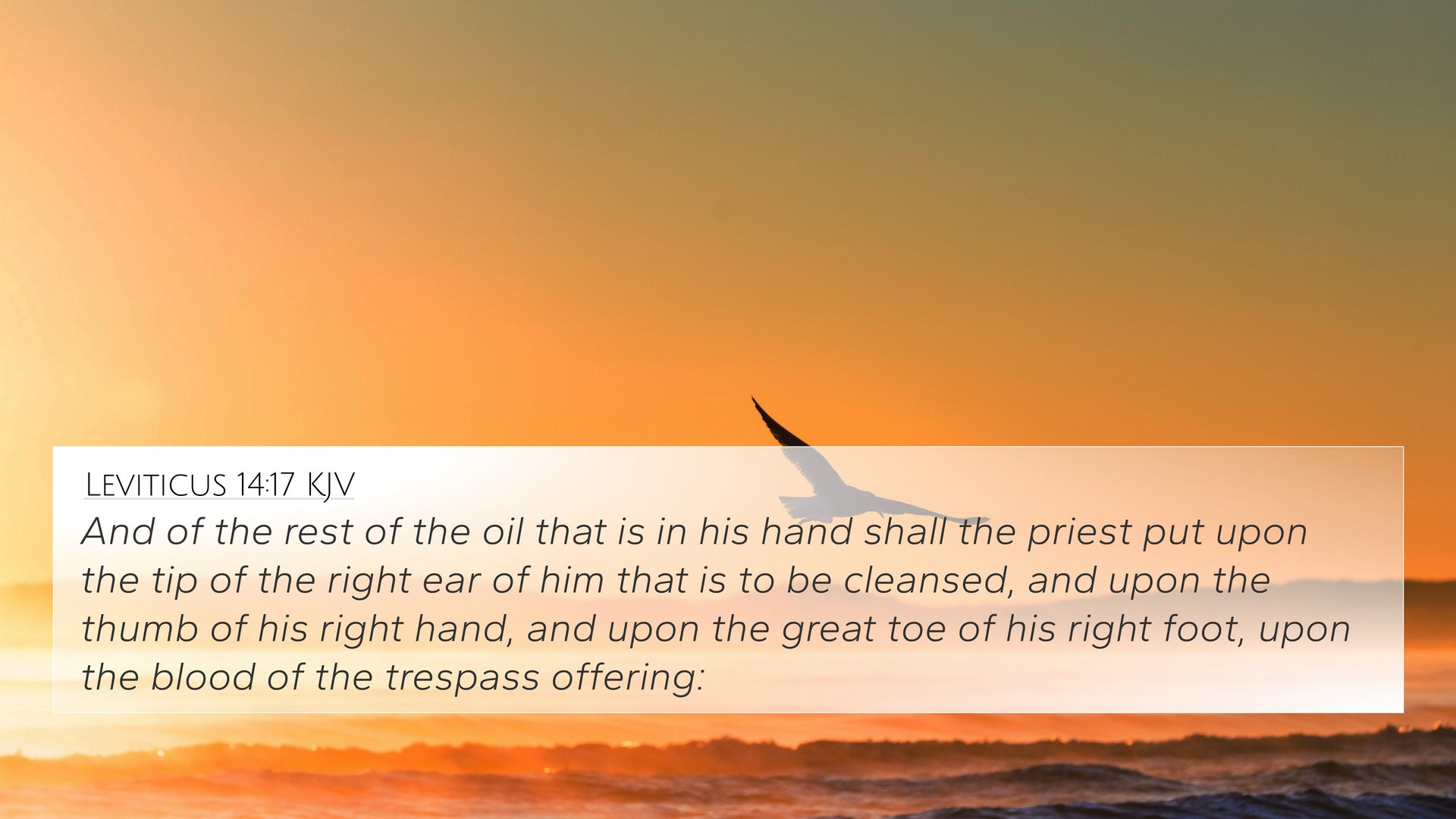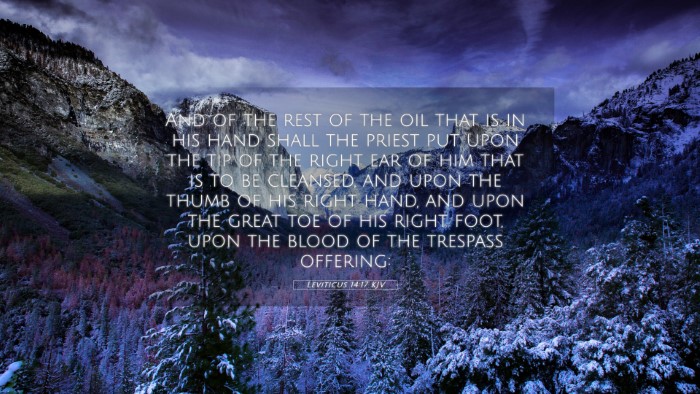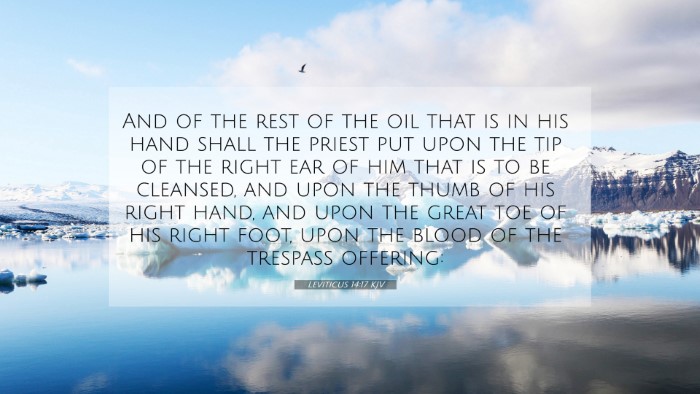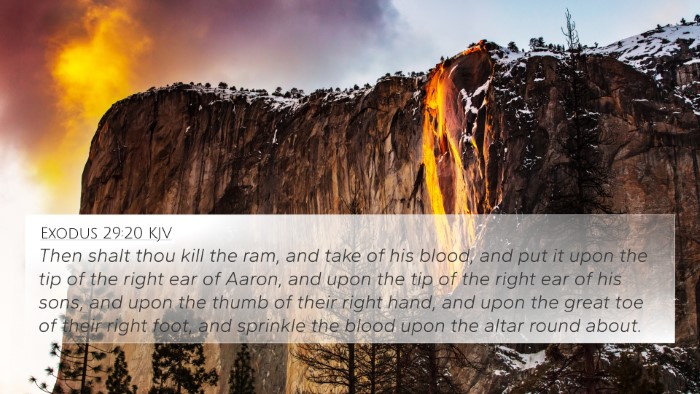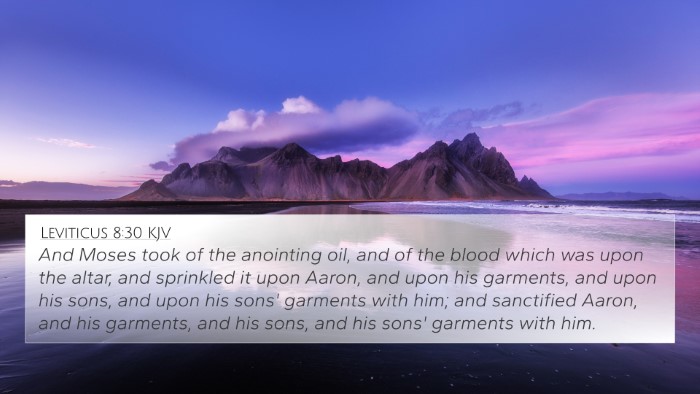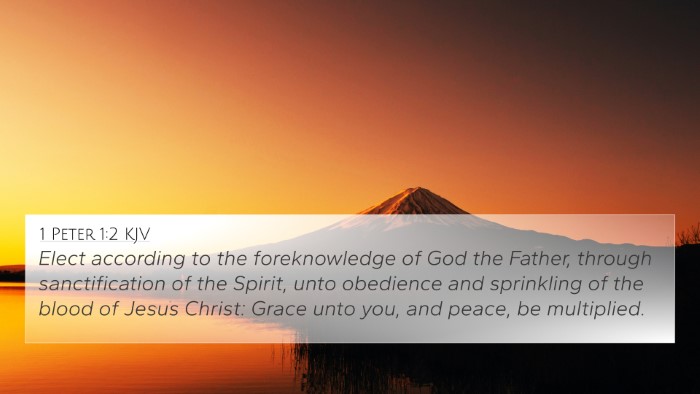Understanding Leviticus 14:17
Bible Verse: Leviticus 14:17 - "And of the rest of the oil that is in his hand shall the priest put upon the tip of the right ear of him that is to be cleansed, and upon the thumb of his right hand, and upon the great toe of his right foot." (KJV)
Summary of Meaning
Leviticus 14:17 is part of the ceremonial laws provided to the Israelites, focusing on the cleansing of lepers and other forms of ritual impurity. The verse speaks to the priest's role in the process of cleansing, symbolizing restoration to community and worship. Here, oil signifies sanctification and healing, illustrating a deeper spiritual truth of salvation and divine healing.
Commentary Insights
Matthew Henry's Commentary:
-
Symbolism of the Oil: Matthew Henry highlights the oil as a representation of the Holy Spirit, underscoring anointing and purification.
-
Priestly Role: The act signifies the authority and responsibility of priests in facilitating reconciliation with God and the community.
Albert Barnes' Notes:
-
Ceremonial Importance: Barnes emphasizes the ceremonial importance of this act as an essential step in the process of restoration for those who were social outcasts due to leprosy or other impurities.
-
Physical and Spiritual Healing: He notes that the anointing should be interpreted both physically and spiritually, as it indicates God's healing and restoration for individuals.
Adam Clarke's Commentary:
-
Methodology of Cleansing: Clarke discusses the specific method of cleansing outlined in this verse, indicating God's detailed instructions for restoring health and purity.
-
Typology of Christ: He also draws attention to the typology of Christ, suggesting that this practice symbolizes the coming messianic purification through the anointing of the Holy Spirit.
Bible Verse Cross-References
- Exodus 29:20 - "Then shalt thou kill the ram, and take of his blood, and put it upon the tip of the right ear of Aaron, and upon the tip of the right ear of his sons, and upon the thumbs of their right hands, and upon the great toes of their right feet..."
- Leviticus 8:23 - "And he slew it; and Moses took of the blood of it, and put it upon the tip of Aaron's right ear, and upon the thumb of his right hand, and upon the great toe of his right foot..."
- James 5:14 - "Is any sick among you? let him call for the elders of the church; and let them pray over him, anointing him with oil in the name of the Lord..."
- Isaiah 61:1 - "The Spirit of the Lord God is upon me; because the Lord hath anointed me to preach good tidings unto the meek..."
- 1 Peter 2:9 - "But ye are a chosen generation, a royal priesthood, an holy nation, a peculiar people..."
- Hebrews 10:22 - "Let us draw near with a true heart in full assurance of faith, having our hearts sprinkled from an evil conscience..."
- Numbers 5:1-2 - "And the Lord spake unto Moses, saying... Command the children of Israel that they put out of the camp every leper..."
Connections Between Bible Verses
The connection between Leviticus 14:17 and other verses in the Bible illustrates the importance of cleansing and restoration. The practice extends beyond physical healing; its symbolic nature points towards the work of Christ who cleanses from sin and impurities. Each referenced verse reveals layers of biblical themes, emphasizing God's desire for purity, wholeness, and fellowship with His people.
Thematic Bible Verse Connections
The themes of cleansing, healing, and restoration interconnect throughout Scripture:
- Cleansing from Sin: The act of anointing is not just for physical affliction but aligns with spiritual cleansing as seen in the New Testament.
- Role of the Priest: Both Leviticus and the New Testament affirm the necessity of mediators between God and humanity.
- Anointing: The significance of oil as a symbol of the Holy Spirit flows through various texts confirming God's empowerment and presence.
Conclusion
Leviticus 14:17 serves as a pivotal text illustrating God's detailed plan for ritual purification. The role of the priest is central as it represents the restorative nature of God’s covenant with Israel. Moreover, its theologically rich layers deepen our understanding of how God desires to heal not just physically but spiritually, pointing to the ultimate healing fulfilled in Jesus Christ.
